Work in progress (WIP) in manufacturing refers to partially finished products at various stages of production, and it’s a key concept in efficiency. Taking the right approach to managing WIP in manufacturing ensures your resources are put to the best possible use to avoid delays and missed deadlines.
Striking the right balance between too much and too little WIP is key to optimizing production — it’s easy for manufacturing operations to lean too far in either direction. Mastering WIP means leveraging the latest tools to achieve real-time tracking, dynamic scheduling, and automated adjustments.
What is WIP In Manufacturing? A Definition
WIP encompasses any materials or products that have started moving through the manufacturing process but haven’t reached completion. This includes raw materials undergoing transformation, semi-assembled products, and others still in production. Effective management of WIP manufacturing is crucial as it helps maintain steady production flow without excess inventory accumulation.
Manufacturing work in progress ties up resources, creating a financial burden that hasn’t yet generated revenue. Unlike untouched raw material inventory and completed goods, which are ready for sale, WIP is locked down until completion. Poorly managed WIP inventory can quickly lead to rising costs.
This is why tracking WIP manufacturing at every stage of production is essential. It allows manufacturers to understand their resource allocation, assess workflow efficiency, and ensure that resources committed to WIP are progressing toward completion.
The Importance of WIP in Manufacturing Processes
Effective WIP management is key to maintaining smooth production flows. Well-balanced WIP ensures that manufacturers avoid slowdowns due to material shortages while also preventing excessive buildup that requires additional storage. Optimizing WIP ensures that machines, labor, and materials are all being used efficiently.
High levels of WIP can tie up working capital that could be more effectively used elsewhere. Unfinished products incur additional costs for storage, handling, and tracking costs, increasing the financial burden. On the other hand, having too little WIP can disrupt operations, reduce machine utilization, and negatively impact on-time delivery rates.
WIP management is a key element of many manufacturing systems, including lean and Just-In-Time (JIT) manufacturing. These systems seek to minimize WIP to reduce waste and improve efficiency. With tools like MachineMetrics, teams can avoid overproduction and maintain agility thanks to real-time monitoring and automated alerts.
How to Calculate WIP Inventory
WIP inventory accounting is essential to gaining a clear understanding of how much capital is tied up in WIP at any given time. Calculating WIP inventory levels involves three critical values:
- Beginning WIP Inventory: This is the value of unfinished goods inventory at the beginning of the accounting period. Essentially, manufacturers must carry forward their prior WIP inventory.
- Total Manufacturing Costs: This is the total cost of all manufacturing activities over the specified financial period. It includes raw materials, labor, and manufacturing overhead costs.
- Cost of Goods Manufactured: This is the total value of all completed products created during the accounting period.
You can use this formula to calculate your current WIP:
WIP = Beginning WIP Inventory + Total Manufacturing Cost – Cost of Goods Manufactured
For example, a company may have:
- Current assets of WIP inventory totaling $30,000 at the beginning of the accounting period.
- Costs including $50,000 in raw materials, $30,000 in direct labor, and $20,000 in overhead, adding up to a total manufacturing cost of $100,000.
- Finished goods of $110,000.
Applying the formula, a WIP value of $20,000 is determined.
$20,000 = $30,000 + $100,000 - $110,000
With MachineMetrics, you can track WIP on an ongoing basis by collecting and analyzing real-time production data directly from machines. This makes it possible to maintain up-to-date inventory insights without the need for spreadsheets or manual calculations.
Differences Between WIP and Finished Goods
WIP includes products still undergoing processing, while finished goods are those ready for sale. Finished manufactured goods create revenue, while WIP continues to consume resources.
To achieve an efficient production flow, it’s crucial to ensure that your manufacturing WIP smoothly transitions into finished goods. If you don’t take the right approach to WIP management, you can find yourself dealing with excess inventory, increased lead times, and consequently, lower profitability.
Strategies for Effective WIP Management
Improving your manufacturing WIP management requires effective scheduling and workload balancing. Misaligned production schedules can result in work accumulating at specific stages, leaving other machines idle. Implementing real-time production tracking allows your team to identify and address these work distribution issues promptly.
Minimizing changeovers and machine downtime is another effective way to improve WIP management. Frequent stops disrupt production flow and can cause WIP to accumulate in intermediary processes. By standardizing setups and improving machine maintenance schedules, you can provide the steady, uninterrupted workflow required for optimal WIP management.
Challenges Associated with High WIP Levels
Excess WIP can seriously impact the efficiency of your operations. Unfinished products require storage as they accumulate and contribute to an increase in both capital investment and lead times.
High levels of WIP also impact visibility into work order progress due to the elevated number of orders in progress at once. This makes prioritization more difficult, resulting in increased idle time, frequent rescheduling, and extended lead times. These factors degrade operational efficiency and can impact overall productivity.
Benefits of Reducing WIP in Manufacturing
Reducing WIP levels has several benefits, including faster production cycles, lower production costs, and enhanced efficiency. With lower WIP levels, your team can streamline inventory management and warehousing requirements, saving time and money that can be better spent elsewhere.
Lower WIP levels also make your operations more agile. This flexibility allows your team to respond more quickly to market demands, thanks to reduced inventory and lead times. In addition, quality control improves as defects are easier to catch when there are fewer unfinished goods in the pipeline, ensuring higher product quality and customer satisfaction.
Tools and Technologies for Monitoring WIP
Monitoring WIP requires the right tools to achieve real-time visibility into production. Traditional tracking methods like spreadsheets and manual logs fail to capture the live updates necessary to optimize WIP. Modern MES WIP systems, IoT devices, and digital dashboards are all key tools for monitoring inventory levels, production speeds, and bottlenecks.
MachineMetrics makes monitoring WIP easy with real-time alerts, automated tracking, and predictive analytics. This enables your team to dynamically adjust workloads to prevent bottlenecks and optimize production efficiency. The combination of real-time visibility and dynamic scheduling take the guesswork out of WIP management and create a more streamlined and efficient production process.
Key Metrics to Track for Optimizing WIP
There are a few key performance indicators (KPIs) that your team can leverage to improve WIP management. Some common examples of KPIs related to WIP include:
- Cycle Time: Total time to complete a single unit, including processing, setup, and wait times.
- WIP Turnover Ratio: The frequency at which WIP inventory is converted to finished goods.
- Throughput Rate: The number of units successfully completed over a given time period.
- Machine Utilization: Machine utilization is the percentage of available machine time used for production.
- Lead Times: The elapsed time from order release to final production completion.
Continuously analyzing these metrics lets you optimize production flow, prevent delays, and avoid unnecessary WIP accumulation.
Common Misconceptions About WIP in Manufacturing
Many manufacturers assume that high WIP levels actually indicate greater productivity. However, holding too much WIP often means that production scheduling and the capacity of upstream and downstream processes aren’t balanced. A truly optimized production process could maintain the same output without excessive WIP accumulation.
Others make the opposite mistake, assuming that WIP should be entirely eliminated. While systems such as lean manufacturing focus on reducing inventory, some WIP is necessary to prevent bottlenecks and to maintain high machine utilization across production from start to finish. The key is to maintain a balanced flow that avoids both accumulation and shortages.
The Role of Automation in Managing WIP
Automation plays an essential role in effective WIP management by reducing the need for manual intervention and optimizing workflow efficiency. Manual tracking of manufacturing progress is prone to introducing delays and errors in production. A modern production intelligence platform that enables real-time scheduling, predictive workload balancing, and enhanced visibility is essential for optimal WIP management.
MachineMetrics provides just that, with automated monitoring and dynamic scheduling capabilities that can identify slow-moving inventory, optimize production plans, and reduce excess WIP. Instead of taking a reactive approach, predictive analytics and automated alerts your team to tackle production slowdowns before they escalate into critical issues.
Effective WIP Management in Practice
MachineMetrics worked closely with aluminum delivery truck manufacturer Morgan Olson to address key areas impacting WIP. With MachineMetrics’ real-time platform, Morgan Olson moved away from paper-based systems to implement trackable codes that provided clear visibility into production flow.
This change made it possible for shift operators to quickly address bottlenecks and raise overall machine utilization to 72%. Real-time updates and proactive scheduling let teams make informed decisions each shift, reducing lead times and costly inventory buildup to optimize WIP.
Why You Need MachineMetrics to Optimize Your WIP Manufacturing
Taking the right approach to WIP manufacturing is essential to maintaining production efficiency, reducing costs, and ensuring on-time delivery. Putting this into action requires real-time visibility into ongoing production and inventory to avoid bottlenecks, excess inventory, and scheduling delays.
MachineMetrics’ Production Scheduling Intelligence provides real-time MES WIP tracking, dynamic scheduling, and predictive analytics to help your team maintain that delicate balance. Book a demo today to discover how MachineMetrics can transform your manufacturing operations.
Ready to connect your shop floor?
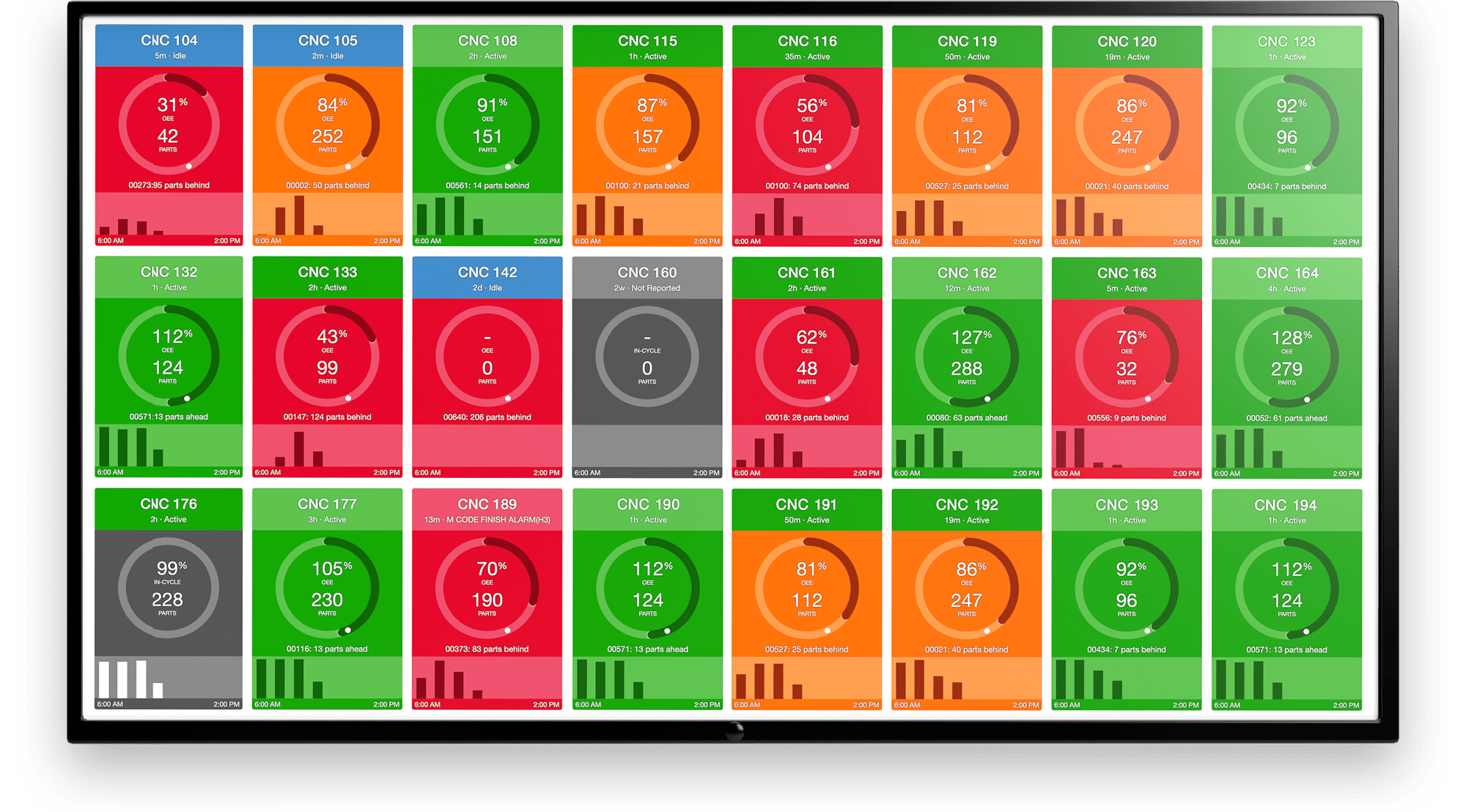
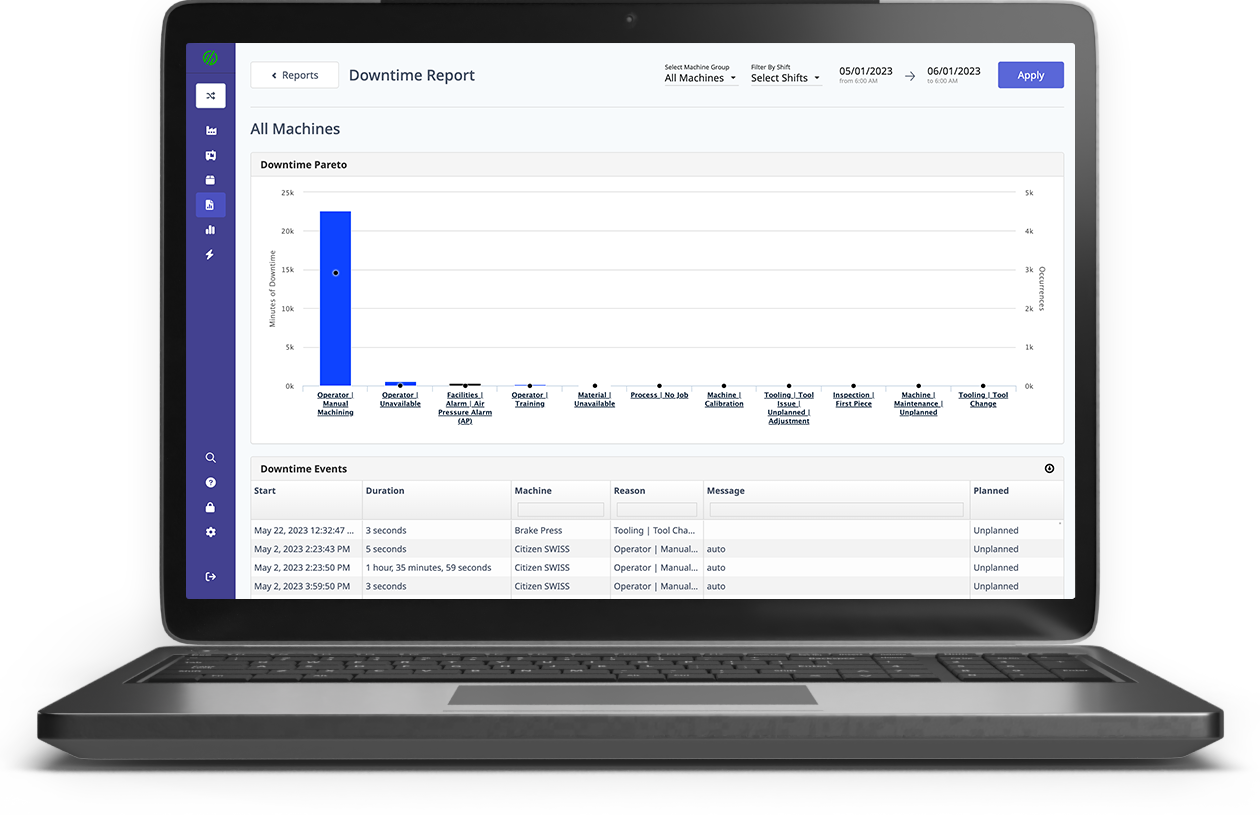
.png?width=1960&height=1300&name=01_comp_Downtime-%26-Quality_laptop%20(1).png)


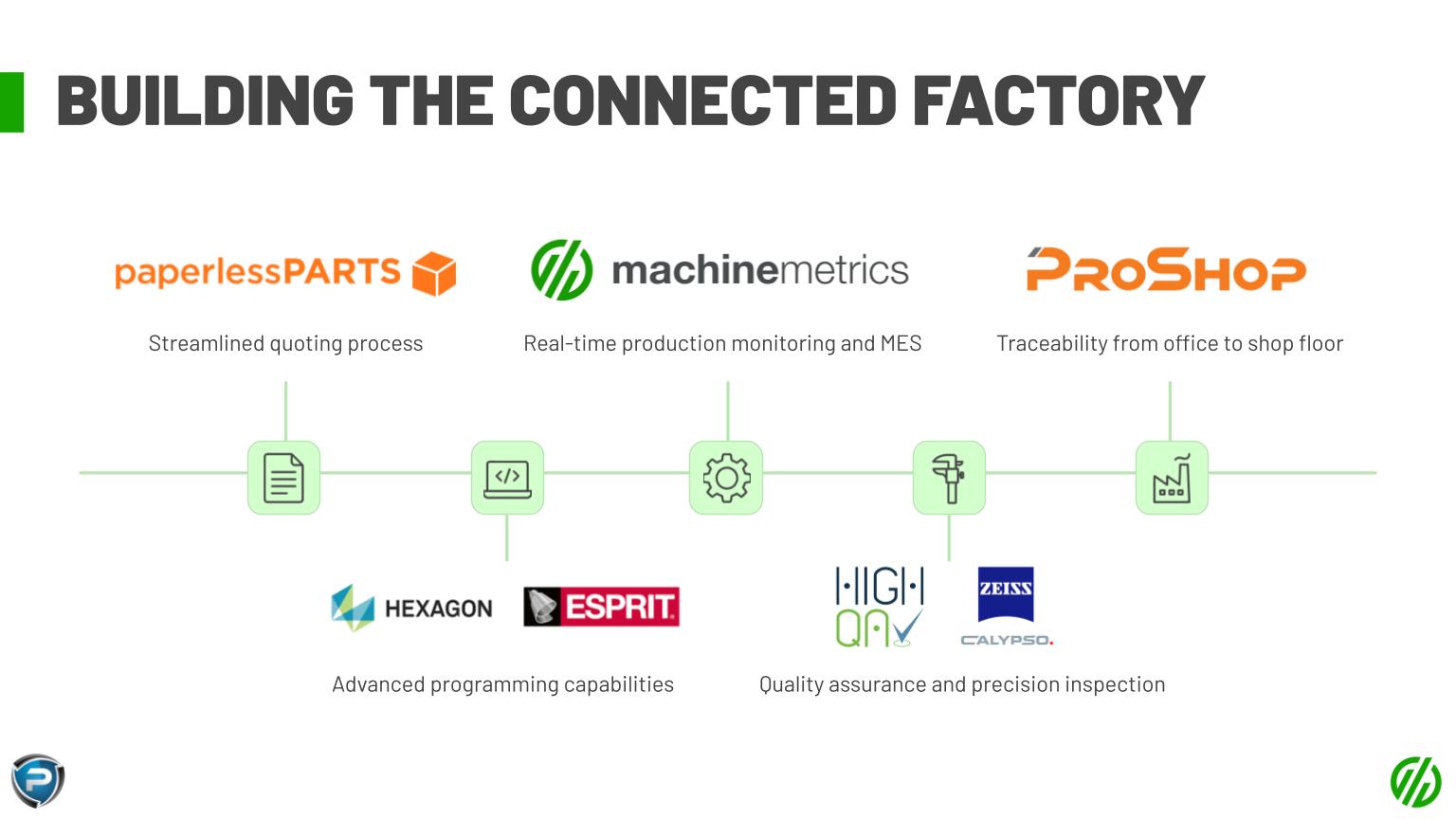


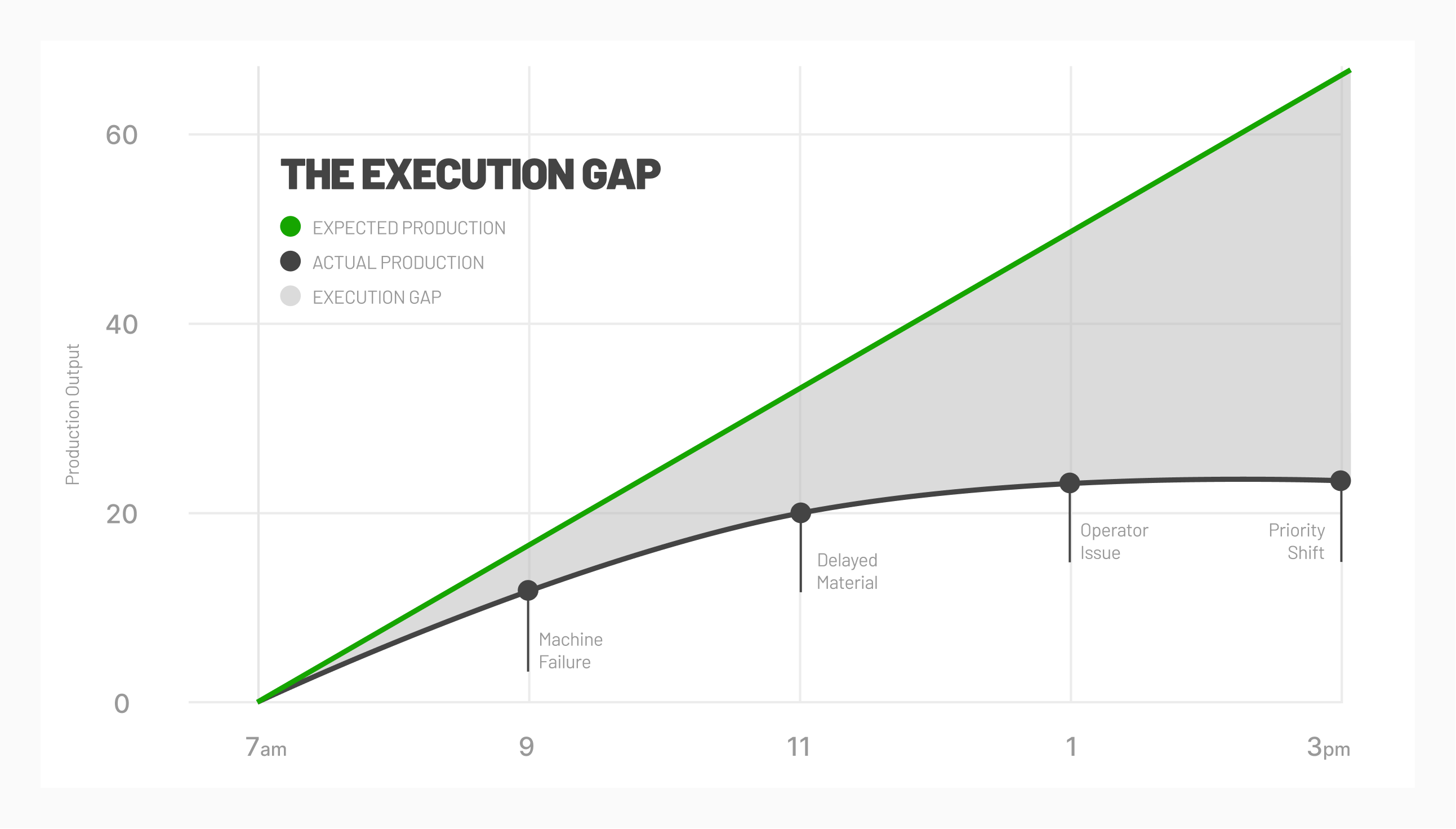



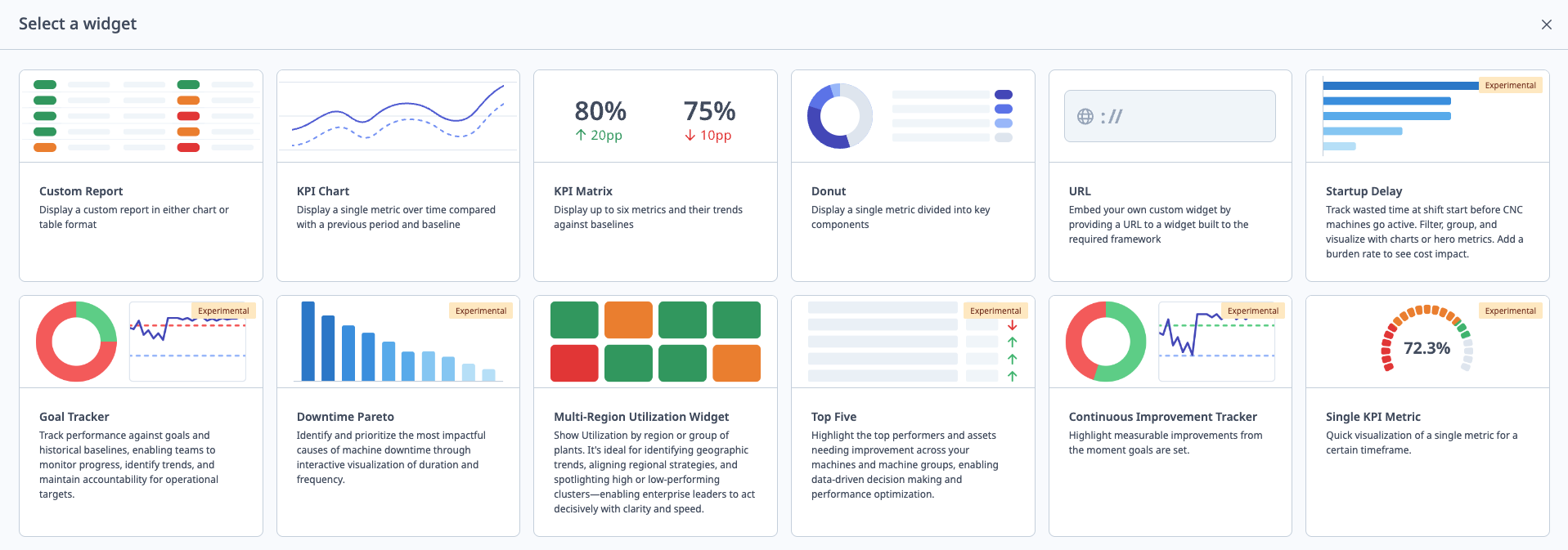
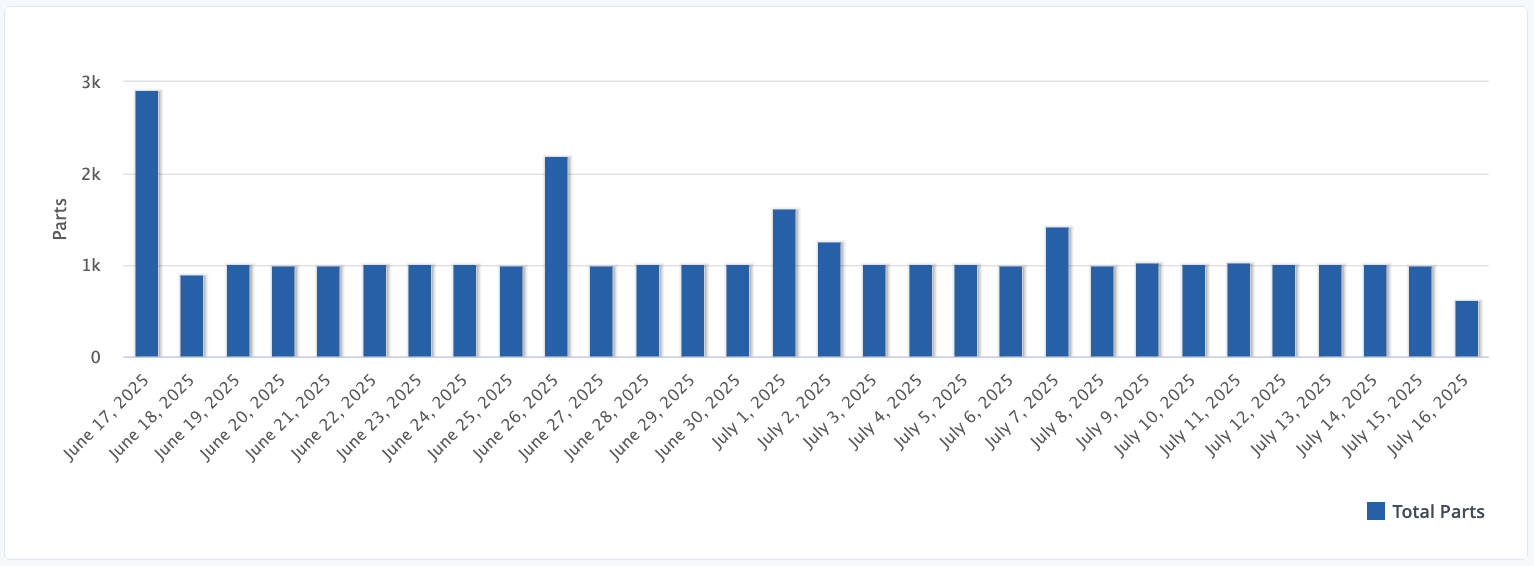
Comments